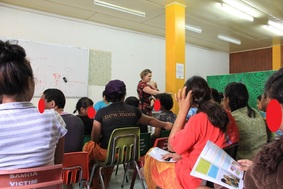 I was privileged to spend some time with some gorgeous girls in Samoa last year. As my blog posting has been sporadic-at-best as of late, this has sat in my 'drafts' way too long! Background In 2013 I was planning a family holiday to Samoa. As someone passionate about social justice, I like to ‘give back’ to the communities I live in and visit. I had helped organised an aid package to go to Samoa Victim Support Group previously, and I thought I may be able to offer a workshop to the girls at their residential shelter. Wellington-based charity SpinningTop connected me to their President Lina and we organised for me to provide a workshop for them. What I Did When we arrived in Apia I met with Lina at the SVSG offices and she gave me more background on their organisation. We discussed what I would be teaching the girls and I gave Lina a couple of boxes of supplies I had brought with me – Air NZ had kindly agreed to transport these for free. The boxes contained some donated stationery items, disposable sanitary pads donated by Kotex, as well as re-usable packs from Days For Girls NZ (containing underwear, cloth pads, and a wash cloth). I spent a morning with approximately 30 girls - the girls were fantastic and really engaged, and the staff were very supportive. The girls were gorgeous, so full of smiles and laughter. They are survivors for whom I have the utmost of respect for. Lina had told me some of their stories, and these girls have all been on traumatic and heartbreaking journeys. Most of them are with SVSG because they are survivors of sexual violence, for many of them this is incest. Many of them have been pregnant as a result of this violence. Tragically in many cases these girls have been disowned and blamed for bringing shame on the family. SVSG provides safety, education and a home for these girls. SVSG also manages the legal process to bring justice for these children. The girls had lots of questions and I felt like we could have spent a lot more time together. The level of knowledge and understanding of how their bodies work was very low. Most knew very little about the menstrual cycle, pregnancy and childbirth - despite there being pregnant girls and girls who had already birthed in the group. My (then 10 month old) daughter Nina accompanied me and I found that having her there was a good ‘icebreaker’ with the girls. The girls enjoyed chatting and playing with Nina as they warmed up to me. As it turned out Nina ended up sleeping in my front-pack for most of the morning as I taught - it was more than 30 degrees in the classroom so we were rather sweaty by the end of it! I was a little taken aback when TV cameras arrived just as we were starting. They filmed the introductory part of my session and then in the middle of the session I was called out for an interview. I was a little anxious about this as had had no warning and I wasn't sure what angle they were going to take, but I kept it very neutral and emphasised the importance of all people having a good understanding of their bodies and sexuality. It came across well on the news that night. I left SVSG feeling like what I had done that day with the girls was but a drop in the ocean. I felt like I had empowered the the girls with knowledge of their bodies, but also knew there was so much information we didn't cover. SVSG were hugely grateful for the workshop, but I wanted to do more. These girls really touched my heart. There is a huge need for ongoing body/sexuality education as well as antenatal education for the pregnant girls. SVSG has been on my mind a lot since. Looking Forward Earlier this year SpinningTop approached me to see if I would be interested in offering a more comprehensive programme for the girls at SVSG. With SpinningTop's support, I am returning to provide a one-week programme in August 2014. I am currently fundraising for supplies (food, baby formula, educational supplies) for SVSG and am hugely appreciative of any donations. For more details on this project, please click here.
4 Comments
 This guest post is by Dannielle Miller. Dannielle is a highly respected and experienced educator, author and media commentator on issues affecting teenage girls. She is CEO of Enlighten Education and this post originally appeared on her blog. I had a revealing conversation with a single parent of a 12-year-old girl the other day. His daughter had been feeling particularly moody, he said, as she was just about to menstruate. I asked if she had had this premenstrual phase of her cycle explained to her. “Yes, she knows all about her periods” was his response. Yet I suspected after talking with him further that, as it is for many young girls who are given “the talk”, this conversation was reduced to an explanation of how to care for herself physically during her period. In its most simplistic form, it is often a chat about pads versus tampons, and tends to come with the dire warning that if they are not “careful” they could now fall pregnant. The fact is, once our girls menstruate, we don’t tend to be very helpful in advising them beyond sanitation, abstinence and, if we are particularly switched on, contraception options. Rarely do we discuss how to deal with the fact that for many girls and women emotions may be heightened during the premenstrual phase and behaviour altered. And even if we do allude to premenstrual tension (PMT), it tends to be in terms that promote and reinforce the archetypal “crazy lady” myth, which would have us reduce everything a woman expresses during this time to hysterical ramblings. It is particularly apt that women are often referred to as being “hysterical” during this stage in their cycle, as the term derives from the Greek word meaning “womb” (hence the term “hysterectomy”). Historically, society would have us believe some deep flaw within our wombs is literally making us insane! "One day she is all smiles and gladness. A stranger in the house seeing her will sing her praise . . . But the next day she is dangerous to look at or approach: She is in a wild frenzy . . . savage to all alike, friend or foe . .." Semonides, Greek philosopher (c. 556–468 BC) Premenstrual tension has been recognised as a medical condition since 1953 and has even controversially been used as a defence for murder—hence the headline to this post, which comes from a newspaper report chronicling a 1980s court case in London in which PMT was raised (unsuccessfully, I might add) as a defence for homicide. Premenstrual tension may include physical symptoms such as leg cramps, bloating and headaches; emotional changes such as increased depression and anxiety and lower self-esteem; and behavioural changes including increased irritability, social isolation and being accident prone. I have been known to suffer from particularly bad PMT at various points in my life. Leg cramps? Check. Bloating? Absolutely. Increased depression? I have been known to weep at the thought of making yet another school lunch. Irritability? My ex-husband used to always joke that I would threaten to divorce him once every month. Despite knowing my feelings at this time are certainly heightened, I also believe they are valid. In fact, as I’ve gotten older I’ve learnt to be very attentive to them, as I can often more clearly see, for example, what is wrong in my relationships at this stage. Usually I tend to repress these darker feelings. In a sense, my inner voice stops whispering and starts screaming at me (okay, okay, and often at others) that week! I am no longer so quick to silence my womb and my female intuition. Rachel Hansen, a colleague and sexual health educator, offered me her insights: "In my 20s, I used to dismiss PMT as that time of the month when I was particularly irrational, but I now think of this as a time when I actually allow myself to acknowledge and express the full range of my emotions. Talk about liberating! Menstruation has traditionally been associated with craziness and all things negative. I think that we women have to reclaim this time in our lives, to reclaim it as a particularly special, empowered time – heck, perhaps the closest we get to being Superwoman each month!" A friend who is a mum to two girls explained to me how she supports her eldest daughter to not ignore, but rather manage, her mood swings: "She would get so emotional and fiery, to the point where she was confused and didn’t know what was ‘wrong’ with her and why she kept arguing with us. I sat her down and explained that it’s very normal to feel the way she does and that her feelings are legitimate, but that in the midst of those more out-of-control moments around period time, we need a word to remind her, and us, as to why she’s struggling to articulate herself. I told her to choose a word that reminds her of something calm and happy that she could use, so that she can just say the word, and then that will be our signal to just stop and hug her, to show her that we care about her feelings, but that we need to pick up the conversation later. (Most of the time, what worried her so much is forgotten later anyway.) Her word is ‘unicorns’. This works really well for us and for her, and has made a huge difference." Psychologist Jacqui Manning offered me the following really practical tips for girls (and women) to help them better understand and manage this stage:
Of course, it’s also important to distinguish the feelings that really are worth listening to during this period (pardon the pun) from those that are okay to merely let wash over us. A good friend offered me this when I asked for her thoughts on PMT last week: "Danni, it’s all a bit too close to home for me today given that I’ve spent the morning in bed feeling bloated and crying for no clear reason at all. Based on the thought processes I was having, it has something to do with a letter that was sent about me in high school, a sad movie I once saw, and the fact that my boyfriend doesn’t have time to go out to lunch today. The TRIFECTA!" Certainly our womb-words can seem somewhat confused and irrelevant, but they can also be deeply insightful. I’m choosing to embrace the journey and help my daughters embrace it too. I have fond memories of my collection of childhood toys - wooden blocks, Big Ted, My Little Pony, the Cindy doll my parents bought me (instead of the Barbie I REALLY wanted), Lego, railway tracks... And nowadays I enjoy sometimes escaping into the imaginary world with my four-year-old boy and his collection of treasured toys. I read about the toys on offer for kids, I see kids playing with toys and the students I work with tell me about the toys that are and were important in their lives. There is a lot of writing about the highly gendered and also sexualised nature of many childhood toys these days, but on Friday I suddenly realised that I could count on one hand the number of times I have been in a toy store since entering adulthood. Inspired by other writers, I decided it was time to hit the front-line. What was on offer for New Zealand children? Was it as bad as it was in the USA? (where much of the research I read comes from) And what are the 'good' options out there? Armed with my camera, I entered our local toy store (one of a nationwide chain). And thus began an hour of walking up and down every aisle, taking note and photographing the good, the bad and the plain downright ridiculous. Into 'GIRL ZONE' 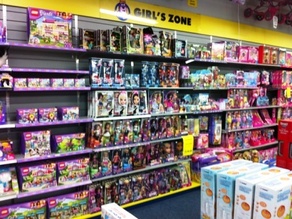 Upon entering the store, the first thing I noticed was that there was an area labelled ‘Girl’s Zone’, but the only other zone to be labelled was 'Pre-school'. Is this because all the other toys in the store are designed for boys (the default ‘normal’), or is it that all the other toys are for both boys AND girls but this wee corner is for girls only? I headed over to investigate further and was nearly blinded by the pink-ness. First up, the Barbie display... 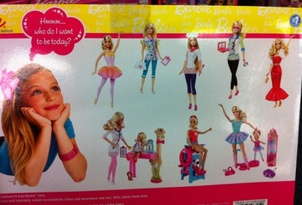 "Hmmm, who do I want to be today?" I had high hopes for the Barbie 'I Can Be..." range. I recall as a child in the 1980s Barbie was a real 'girls can do anything' kinda gal, so I thought that surely by 2012, any remnants of that 1952 original passive doll would be well and truly banished. Unfortunately it seems that Barbie's career options in 2012 are very limited to what she can do whilst still wearing form-fitting lycra and/or heels. And the ubiquitous pink of course. There were five career options in the character dolls (see below) - I challenge anyone to find me any real-life professional woman whose wardrobe resembles any of these outfits?! And as someone who spent my teen years as a surf lifeguard, it sure as hell didn't resemble this Barbie scene. A friend was telling me recently that she had relented and had promised her daughter a Barbie as long as she could find one doing 'normal' things - such as snowboarder Barbie. There wasn't a snowboarder Barbie in this shop, but I can envisage her ensemble already... 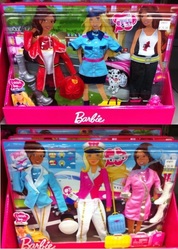 And if you wanted to simply give your exisiting Barbie a new career, you had six different outfits to choose from. As you would never guess the occupations from their outfits, let me label them top to bottom, left to right:
Next to Barbie was the much criticised new line of Lego, designed especially for girls - the 'Friends' range. Their catch-phrase is "The Beauty of Building" - because we wouldn't want girls to forget for a moment that regardless of the activity, it always comes down to beauty, right? 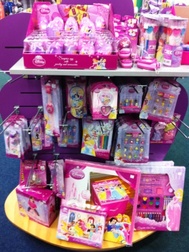 Anyone for Disney Princess paraphernalia? I personally dislike this range from Lego. I dislike the emphasis on beauty and I hate that the 'Friends' range have totally different bodies to the 'standard' range - they have boobs and makeup. There is no way one of the 'Friends' would EVER want to play with a standard Lego boy or girl! It's problematic that in creating a specific 'girls' range, by default the rest of the Lego range becomes a 'boys' range, thus limiting girls' options. And the narrow range of activities and colours offered to the girls drives me nuts. There is absolutely no scientific evidence to indicate that girls have a natural inclination towards pastel colours. Lego is just playing into the pinkification of girl-world that serves to further the gender gap amongst children and thus increase the profits of those marketing things to children. Next up was the Disney Princess Zone. In a moment of marketing genius, this line was released in 2000 and now there are now more than 25,000 Disney Princess items and many other companies have jumped on board to create Princess-mania in girl world. Lyn Mikel Brown, co-author of Packaging Girlhood, is concerned by the the sheer dominance of princess culture: “When one thing is so dominant, then it’s no longer a choice; it’s a mandate, cannibalizing all other forms of play. There’s the illusion of more choices out there for girls, but if you look around, you’ll see their choices are steadily narrowing.” As I continued to wander round 'Girl's Zone' I found more and more pink washing, and more and more toys with come-hither eyes and sexy poses. What really struck me was how much some of these toys had changed since I was a girl. In my day 'My Little Pony' was a sweet chubby thing with demure eyes. Her latest incarnation is decidedly sexy, curvy and oh, those eyes. There were a few brands in 'Girl's Zone' that really stood out in a positive way: Venturing out of 'Girl Zone', I headed towards the 'Pre-school' zone... I was pleased to see the gender-neutral 'preschooler' sign, although interested in the offerings as many of the toys in the 'Girl's Zone' were aimed at the pre-school age group. This section gave the impression of being very gender-neutral, but upon closer inspection, many of the toys revealed themselves to be playing into tired gender stereotypes: However, there were also some great non-gender-limiting options: (No other 'zones' were labelled, so the following categories are ones that I have used) Puzzles and games Of all the different types of toys, I would have thought that this genre would have the least need to be gendered. Apparently not. I think the biggest issue with gendering things like this is that it strongly discourages cross-gender play. Unfortunately I feel that few four year old boys would want to play with the pinkified versions of these games. By then, for many boys the gender message has been well and truly absorbed. Outdoor toys 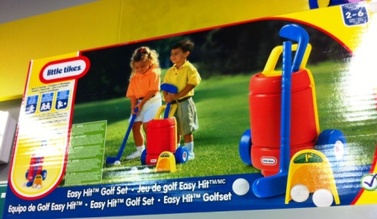 A WINNER from Little Tikes! Gender neutral packaging PLUS an image of a boy and a girl playing together! *calm down Rachel, keep in mind how ODD it is that this is so rare!* Building and Science Sets These were located in the area I think a child would describe as the 'Boys' Zone' (although there were no actual signs to indicate this). Alongside these sets seemed to be an overwhelming collection of toys based around themes of fighting and violence. As the mother of a little boy, I am disturbed by the messages these toys give him about what it means to be a man. I could not find a single toy in this area that depicted a boy or a man in a caring or nurturing role. Play is one way children learn about what it means to be an adult as they role-play with the toys provided to them. What are the consequences of raising a generation of boys whose understanding of manhood is based on ninjas, soldiers and Avengers? My little adventure into the toy store was both depressing and comforting.
Depressing because of the overwhelming number of gender-limiting options out there. I imagined my four year old son Sol being let loose in that store to explore and admire the toys available to him. He would be confronted with SO MANY gender-limiting stereotypes. He would be presented with a very clear picture of what it is to be a girl, and what it is to be a boy. Both of these definitions are very narrow, and he would quickly realise it was high time he dumped all of his female friends. I would label very few of the toys in this shop inherently "bad or "wrong", but it's the overwhelming message they present en masse, and also the stark reality of what is missing. I managed to find three images of girls and boys playing together IN THE WHOLE STORE. Research shows that cross-gender play in childhood increases the likelihood of more healthy romantic relationships in the teen years, yet it seems that marketers are doing all they can to prevent this. Comforting because I realised that, if I searched hard enough I could find toys and games that were not gender-limiting. There are options out there for parents willing to take the time to find them. Some companies are still marketing their product to both genders, and although many had fallen into the highly-gendered trap, a number still offered a 'gender neutral' option alongside their gendered stuff. For this, I am heartened, and this quote comes to mind: "Don't tell me where your priorities are. Show me where you spend your money and I'll tell you what they are." - James W. Frick Childhood lasts for such a precious short time, let's not shorten this further by placing limitations on who and what our children can be. Let's not allow the financial motivations of toy companies have any part in how our children define themselves. Let's give our children the time and the space to explore and experience their world without being limited to what pop culture dictates is "right" for their gender. As soon as we found out that I was pregnant we told our three-year-old son Sol about the pregnancy and he has been involved in the midwife appointments and lots of excited talk about our new baby. He recently accompanied us to the 20-week ultrasound scan. After the radiographer had done all the important measurements and observations, she got to the least important part – finding the vulva or the penis. While she was looking for that part of our baby’s body she said to me: “Ouhhh, you’ll soon know if you’ll have to be buying a pink tutu!” (I am sure my husband smothered a laugh at this point. I refrained from launching into a tirade about gender stereotyping and the findings of various neurological studies on babies and gender.) As it turns out, we spotted a vulva. And I realised that, at 20 weeks gestation this wee girl had already experienced her first gender stereotyping. It isn’t that pink tutus violently offend me, it’s that there was an assumption that if my baby had a vulva, then a pink tutu would be the most important thing on my mind, and that her vulva would automatically predispose her to an uncontrollable urge to wear pink tutus. Who knows, she could be an absolute ballet fanatic, in which case I am sure our house will be loaded with tutus of all description. Or she could be a soccer player, a hip-hop dancer, a chess-genius, a swimmer... - in which case we may have no pink tutus at all. Or maybe she’ll have stages of being all of the above, and our already-cluttered house will have a collection of all sorts of outfits in all sorts of colours. All I know is that I will do everything in my Mama-Bear power to protect her from the tirade of gender-limiting stereotypes that I know will attempt to surround her from birth (and before!). All of a sudden I am deeply grateful on a personal level for the amazing work done to counter such attitude by individuals and organisations such as Enlighten Education, Pigtail Pals, Pink Stinks and 7Wonderlicious. And I will leave you with the wisdom of little Riley, who articulates the craziness of all this stuff just so so well: Vulvas. There are billions of them out there, and they are a pretty diverse collection. I am no geneticist, but I would say there was as much diversity in vulvas as there is in fingerprints. And as long as women have had vulvas, in most cultures they have been covered in public hair. Until recently...
A few weeks ago I was visiting a Catholic all-girls’ high school. I had never been there before and I was meeting with the school counsellor and the Deputy Principal for the first time. They had come straight from the staffroom, where it sounded like a very lively discussion had been taking place. After we greeted each other the Deputy Principal said that before we started the meeting they would love my opinion on the topic the staff had been musing over during morning tea. Of course I said yes – very curious by this point! “We are all trying to work out WHY none of our senior girls have pubic hair?” (Apparently the topic had come up in a health class discussion). And we are not talking about delayed puberty here. We’re talking about teen girls, and why it is the norm to have a vulva stripped of hair. These days, many girls tell me about the immense pressure to look a particular way now extends to their vulva. It’s not enough to have perfect legs, a flat stomach and blemish-free skin – their vulva must also be bald. Why indeed is a generation of teen girls finding themselves under immense pressure to wax or shave all their pubic hair? Because it certainly wasn’t like this 15 years ago when I was at high school. We’d shave our bikini line when necessary - just enough to ensure no stray hairs were visible when swimming. But if anyone had suggested getting rid of it all, I am sure we would have been appalled. In fact, I remember girls in my first year of high school proudly displaying their pubic hair growth – for us it was a sign of maturity, of leaving girlhood behind. Now it seems that as soon as pubic hair appears, girls are feeling the pressure to get rid of it so their vulvas resemble a prepubescent child. I want to talk a little about pornography. When I was at primary school, every so often we would hear the boys whispering about a Playboy magazine that one of them had found amongst their Dad’s secret stash. And one memorable day my friend and I were exploring and we came across a man stashing a whole pile of Penthouse magazines on the side of the road. We spied on him and after he left we grabbed them all, had a little giggle over the contents and handed them over to our parents. I am sure our parents would have preferred we hadn’t seen those magazines, but other than a fascinating glance at spread-eagled nude women, they were pretty unmemorable. A far-cry from the easily accessible plethora of porn available these day. This generation of youth are being exposed to explicit pornography in a way that generations before just were not. According to Big Porn Inc. "Pornography has become a global sex education handbook for many boys, with an estimated 70 per cent of boys in Australia having seen pornography by the age of 12 and 100 per cent by the age of 15." In one recent Canadian study of boys aged 13-14, more than a third viewed porn movies and DVDs “too many times to count”. The impact of this early viewing of explicit porn on girls’ vulvas? If boys are getting their primary sex education from pornography, their expectation is that vulva’s come in one model – hair-free. And if this is what the boys expect, many girls will comply. One teen girl commented that it wasn’t pressure from boys to wax - it was the pressure from her girlfriends. Teens are desperate to fit in – I know that should I have been a teen in this era, there would be no way I would have wanted to be the only girl in the changing rooms with pubic hair. Hair-free vulvas are now entirely the norm. In fact, a school that I used to teach in ran a full-page for Brazilian waxing in the school diary. This diary was distributed to all students, from Year 1 to Year 13. Imagine your five year old writing in their homework for the evening, right next to the “Home of the Brazilian” advertisement. I have no problem with adult women doing whatever they want to their vulvas. Hey, if bejazzling your vajayjay is your thing, go for it. (Just don’t package it in terms of empowerment PLEASE!). My problem is also not with pornography - sexuality is to be celebrated and although 'ethical porn' is a pretty rare thing, it does exist. The thing that really concerns me is that no part of a girls’ body now seems immune to the beauty pressure. The pressure starts so young and this is a ‘trend’ that is driven by a misogynistic porn culture seeping in to our everyday lives. It makes me sad to think of girls being so ashamed of their vulvas in their natural state. I haven’t got a simple solution. Other than to talk talk talk with our children. They need to know that the pornography that they are likely to see (inadvertently or not) is not ‘real’. That is not what women look like, that is not how people experience loving relationships. Give girls the message that they are beautiful as they are, and teach both boys and girls the beauty in diversity. Speaking of diversity, now it is possible to make your vagina whiter. Yep, vaginal bleaching. I have never really considered the colour of my genitals, but apparently it should be another thing to add to my list of "women's worries". This post by Moata reiterates my feelings well! This is the update of the Diva/Playboy situation from Suzanne Culph at Change.org. See my earlier blog post for some background on the issue.
"Huge news! Reports are coming in from supporters in Perth, Brisbane and Adelaide that Diva staff have been removing some Playboy products from display. The campaign is working - but Diva management continue to dig in their heels and are refusing to withdraw Playboy nationwide. Diva’s brand is taking a beating - both online and offline. They’re monitoring what their customers are saying about them online every moment. Taking a respectful message about why you signed the petition directly to Diva right now could tip the balance. Click here to post a personal message on Diva’s Facebook page. It’s important you speak from the heart about why this campaign matters - but if you need some help, here are some ideas on what to say: • Why you’re personally against promoting a porn brand like Playboy to girls. • As a parent and customer how it will influence your shopping decisions. • The impact of the porn industry on women and perceptions of women. The petition started by Collective Shout on Change.org has transformed into a movement of parents and shoppers, determined to hold Diva to account for pushing Playboy products on to young girls. And we’ve been phenomenally successful, some Playboy merchandise has been shoved under the counter “because of the controversy.” Diva’s General Manager Bianca Ginns continues to say they’re just following a fashion trend. Let’s make sure Diva know that selling the porn industry to young girls will never be fashionable - click here to share with Diva why you support the petition by posting on their Facebook wall. Thanks for all that you’re doing, Suzanne, for the Change.org team." 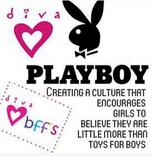 Diva is a budget Australian jewellery company popular with young girls - their ranges include Winnie the Pooh charm bracelets, Disney Princess pendants and Cute Cupcakes Best Friends necklaces. Recently they launched a range of Playboy jewellery - necklaces, rings, bowties, earrings – all come adorned with the popular Playboy bunny symbol. Suddenly Diva’s shop windows were plastered with Hugh Heffner’s porn symbol . Australian bloggers, activists, media commentators, TV and newspapers erupted in anger and controversy over Diva’s Playboy paraphernalia. Collective Shout explains Playboy’s marketing strategy: Playboy has succeeded in embedding its bunny logo on pencil cases, bed linen, cosmetics, jewellery, wallets, slippers and key chains, normalizing and sanitizing the Playboy insignia to children and young people. Playboy deliberately markets its brand to girls as cool fashion chic. Diva has become a willing participant in pimping the brand and its values to its young customers. Many of the Playboy products the company sells are decorated with sparkling diamantes or are in the shape of love hearts. There are ‘Playmate’ pendants and Playmate of the month necklaces (‘Miss January’, ‘Miss February’ etc), which invite girls to think of themselves as porn stars. One necklace depicts a Playboy bunny from her backside down. Her upper body, including her head, is missing. No longer merely a ‘soft-porn’ magazine, Playboy is now a billion dollar global brand profiting from the exploitation and subordination of women. Playboy Enterprises pornographic film titles include “Cum Drinking Sluts”, “Barely 18 Anal Virgins”, “Fresh Juicy Lolitas”, “Double Entry”, “Wait your turn, bitch!” These films and others depict women enduring body punishing and violent sexual acts for men’s sexual pleasure. Diva pretends this doesn’t matter. The Diva Facebook wall was overwhelmed with passionate arguments from both sides of the case. I want to share with you Dannielle Miller's case for what Playboy really means. 1. Playboy is not harmless, mainstream fun. It is not a cute little bunny. 2. Playboy is Hugh Hefner. He is 85. He lives in the Playboy mansion with his girlfriends, all at the same time. It’s not so much that he could be their father, more like their grandfather. Or great-grandfather. He ain’t that cool really, is he? 3. Playboy isn’t harmless or soft porn. As Collective Shout notes, some of Playboy’s films “depict women enduring body punishing and violent sexual acts for men’s sexual pleasure”. Some of their films have titles that are sickeningly degrading of teen girls and women... It is clear from the titles alone that this brand sells material that denigrates women and treats them as objects. 4. Criticism of Playboy isn’t a new thing. Writer and feminist Gloria Steinem exposed the truth of the Playboy Bunny’s life when she wrote a magazine article after going undercover to work at the Playboy Club almost 50 years ago. It wasn’t glamorous. It was badly paid, exploitative and denigrating. She pretended to the woman interviewing her for the bunny job that she had been a secretary. The interviewer looked at her and said, “Honey, if you can type, why would you want to work here?” 5. Playboy is not about women expressing their sexuality. It’s not about liberation. It’s about making money from women’s bodies. This marketing line on the Playboy site sums it up, really: “Get all these girls for 1 low price!” I lent my support to the various Australian individuals and groups voicing outrage and I signed Collective Shout’s petition for Diva to remove their Playboy range. I visited Diva’s Facebook page and voiced my dismay. As far as I was aware, Diva was an Australian company selling products in Australia and I wanted to support my Australian colleagues in their protest. Not a word about Diva was mentioned in the New Zealand media, or by any New Zealand blogger or commentator. Imagine my shock when walking down Wellington's Lambton Quay at lunchtime to be greeted by this sight: Yes, Diva and their Playboy bling are alive and well in New Zealand with 21 stores across the country. These are some products from their New Zealand website: It suddenly struck me: I had heard the Australian voices loud and clear – but where are the New Zealand voices standing up for New Zealand girls? Is it OK that Hugh Heffner’s failing porn company is being propped up by kiwi girls, some not even in their teens? What does a father say when their 10-year-old daughter delightedly shows them the new Playboy bowtie they bought at Diva with their pocket money? Do we want a company that exploits and degrades women to be developing brand loyalty in our little girls? I say no. Anyone else with me?
**NB: I am not anti-porn or anti-sex - I am anti-exploitation. I welcome comments and love to debate, but will cheerfully delete any comments that make personal attacks on anyone. Check out my comments policy if you need clarification. Last week I offered some tips to support parents in talking to their girls about puberty and getting their first period, because now more than ever, parents need to have the knowledge and confidence to be able to discuss sexuality with their children. The work of parents also needs to be backed up by quality holistic sexuality education within all our schools.
If, like many parents, you assume that your child is already getting basic sexuality education at school, think again. Despite the fact that more than half of Australian teenagers are sexually active by the time they are 16, there is no mandatory, comprehensive Australia-wide sex-education policy. In New Zealand, sexuality education is a key area of learning in the National Curriculum, which means that it must be taught at primary- and secondary-school levels. Yet a 2007 report by the New Zealand Education Review Office concluded: “The majority of school sexuality education programmes are not meeting students’ learning needs.” In both countries, there are some schools that offer fantastic programs, but there is no guarantee that your child will be one of the lucky ones. Many parents say to me, “Oh, but my child has no interest/no idea/no awareness about anything to do with sexuality.” This may be true, but their classmates do, and their classmates are talking. If a child isn’t getting information from her family or her school, she will turn to her friends or the internet. I don’t have to persuade you that googling “vagina” is probably not going to throw up much useful advice for a 10-year-old. So I urge schools to do everything they can to meet the physical and emotional needs of students as they reach puberty. Make it age appropriate. As I discussed in an earlier post, puberty is starting earlier for girls, and it is important that they understand what is happening to them before they get their first period. This means that schools need to rethink the age at which they teach students about puberty. In New Zealand for at least the past 40 years, students have been taught about puberty usually in years 7 and 8. As it is not uncommon for girls to start menstruating at age 9 or 10 now, I encourage schools to teach it in years 5 and 6. Don’t segregate! Ensure that the boys in your school are equally well informed about female puberty as the girls, and vice versa. The boys need to be in on the period talks, and the girls need to understand erections and breaking voices. If girls and boys understand what the other is experiencing and why the changes happen, bullying is likely to be greatly reduced. When we had the puberty talk at school, the boys and the girls were separated. I never knew what the boys learnt, but afterwards they were fascinated with our ‘pad packs’ that we’d been given, and they stole them and teased us, demanding to know what we had been told. We were all really embarrassed and didn’t know what to say to the boys. I thought that it would be really naughty if we told them – because obviously our teacher didn’t want them knowing. Because they weren’t taught about it, it made it seem like periods were taboo and secret from boys. — Kelly School was tough. The boys used to grope us to see if we were wearing a pad, then announce to the entire corridor that we had our periods. Or they’d go into your locker looking for pads to steal and stick all over the corridor. — Sophie Stock your library with books and pamphlets on puberty. Age-appropriate books and take-away pamphlets are fantastic for students to access in their own time and when they need answers. Primary schools can be reluctant to put sexuality and puberty books in the library for fear that parents of younger students will complain. One solution that I have seen in some schools is to have a special part of the library dedicated to the older students. These students like it because it’s their special place, and it’s somewhere they can go for answers if they don’t feel comfortable asking their teachers or parents. Make sure students know where to go for help and advice. Students need to know who to go to for support at school if they have concerns or questions about puberty or sexuality. Make sure that girls also know where a supply of pads are kept in case they are caught out. Many schools have these at the administration office, which is always staffed during the day. It is worth having a brief discussion with staff at the start of the year about what to do when a girl gets her period and needs support, as some staff will be unaware of the stress that periods cause some girls. I got my period for the first time in my first week of high school. I was mortified because I didn’t have a pad. My friend went and asked the lady at the front desk and she gave me one – thank goodness! I am not sure what I would have done otherwise. — Laura There was always the fear of getting caught at the far end of school from my locker, needing to change pads and having, in the time a teacher thought was acceptable for a loo stop, to run from one end of the school to another to get supplies. — Sophie Also be sure that girls can dispose of used pads and tampons appropriately. As the average age at which girls get their first period decreases, primary schools now need to make sure there are sanitary bins in the girls’ toilets. I urge parents to encourage their daughter's school to offer quality holistic sexuality education and to check what measures the school is taking to ensure girls are supported through puberty. Most women have a very vivid memory of where they were when they got their first period, what they were doing and how they felt. I was 12 and very reluctant to grow up – life was good as a little girl! On the day my period started I was playing make-believe games with my little brother and sister in our garden and I noticed blood on my undies. I cried and cried and cried. I sat by the window for the rest of the day, watching my siblings play, having decided with great sadness that now I had my period I was too old to play those games. I felt a real sense of loss, and also despair that I was no longer in control of my body.
My experience was very different to my colleague Danni Miller's: I didn’t get my first period until I was 15 years old. I was the last within my circle of friends, and by then, even my younger sister was a veteran (oh the indignity). You’ve never seen a teen girl more prepared for this milestone than I was. I had been carrying tampons in my school bag for so long I think they may well have past their use-by date! I had even had practice in breaking the news to parents as my best friend had been too embarrassed to tell her mother when she started her period and I had broken this news for her : “Mrs Manton, our Janelle has become a woman…” The main feeling I recall when I started menstruating was that of relief. Finally, I was in the “big girls” club! I was so elated I ran into my school assembly and screamed out “I have my period!” to my friends- not realising the teachers were already present and waiting to start. My Year Advisor was very gracious and began the assembly by congratulating me. Research indicates that this moment is happening at increasingly younger ages than in previous generations. Over the past 20 years, the average onset of menstruation has dropped from 13 years to 12 years, seven months, and indications are it will continue to drop. As the average age has dropped by five months, it means that those girls at the lower end of the bell curve are also starting earlier. So nowadays it is increasingly common for girls to start menstruating as early as 8 and 9 years old. Researchers have found that 15 percent of American girls now begin puberty by age 7 (measured by the girls’ level of breast development). This is twice the rate seen in a 1997 study, and the findings are likely to be similar in New Zealand and Australia. Why are girls reaching puberty earlier? Some of the more widely supported theories about why this is happening are:
Traditionally, puberty has marked the transition from childhood to adolescence or adulthood. Many girls absorb the message that beginning menstruation means that they are a woman. Just as I did, some girls who get their periods early can experience a sense of grief and loss, as they don’t feel ready to leave childhood. For many girls, puberty marks the moment that they start to define their self-worth by the way they see themselves in the mirror. And all too often the girls don’t like what they see. Such a response is understandable: at the same time as girls are experiencing an increase in body fat and a widening of their hips, they are bombarded with messages from the media that suggest the perfect beautiful body resembles a prepubescent male or has proportions that can only be achieved through disordered eating or extreme Photoshopping. Ella: I was so embarrassed by my body when I was younger that I couldn’t tell my mum I’d started my period, when I was 13. I lost it for 2 years thereafter as my weight plummeted, so I didn’t really have to deal with it and when it came back I was so angry. It meant a) that I had to deal with this THING happening to my body and b) I wasn’t a ‘good enough’ anorexic. My mum tried to talk to me about it, but I’d just slam doors and refuse to talk about it, or hide under my bed. I found the changes in my body very distressing. I remember when I started growing breasts, initially at 12–13 and then again when I’d gained weight at 16–17 and I’d make deals with God that if I didn’t eat/was nice to my brothers/did all my homework/didn’t shout at my parents/etc., etc., that these things would go away. They didn’t. Now I’m kind of glad of that. It is particularly concerning that evidence suggests that girls who reach puberty earlier have a more negative body image than girls who reach puberty when older. Some girls eagerly anticipate their first period because they believe it will propel them into a world of sexual desirability and adult experiences. For girls at both ends of the spectrum, we need to be quite clear that getting your period does not equate to womanhood. Becoming a woman is far more than our bodies changing. We need to be careful about the symbolism we use surrounding menstruation and the expectations we place on girls. Experiencing puberty at a younger age means that girls’ childhoods are being compressed and often their minds are not ready to deal with the changes that their body is going through. Many struggle to understand and cope with hormone-influenced emotions and sexual impulses, and are not ready to deal with sexual interest from males. Physical maturity often doesn’t reflect girls’ cognitive and emotional development. In their study of the evolution of puberty, New Zealand researchers Gluckman and Hanson concluded that for the first time in human history we are maturing physically much earlier than we are maturing psychologically and socially. Meanwhile, our education system and our expectations as parents are grounded in the 19th century, when there was a closer match between physical and psychosocial maturity. “There will have to be adjustment to educational and other societal structures to accommodate this new biological reality,” they write. The effect of this “new biological reality” is compounded by our consumer culture’s relentless march to shorten childhood. Prior to the late 1990s, marketers had not discovered the concept of tween, a phenomenon that now has girls wearing makeup and high-heels and their parents taking them to beauty salons or to get waxed. And the target market gets younger and younger, as we’ve seen with child beauty pageants. Earlier physical maturity, coupled with a highly sexualised society where girls are bombarded with the notion that sexual desirability is of utmost importance is a toxic combination – which is why it’s more important than ever to keep talking with our kids and showing them we love them for who they are, not for what they look like. This is part one of a three-part series. In next week’s post, I will look at what parents can do to best support girls through puberty. I am seeking personal stories about experiences with school sexuality education. Please email me your stories! A couple of months ago Universal Royalty announced that they were heading to Australia. That's right, the company of 'Toddlers and Tiaras' fame decided that Australia needed to glitz up their kids, and they were the people to help! But there was a strong voice of opposition in Australia, and many voiced outrage at the proposal. Catherine Manning founded Pull The Pin and rallies were held all around Australia to draw attention to the pageants and the the harm they cause. The Royal Australian and New Zealand College of Psychiatrists have backed calls for child beauty pageants to be banned, saying they encourage the sexualisation of children and can cause developmental harm. The chair of the college stated "We're giving these kids messages that how they appear, how they perform and standards about what they're to come up to is actually more important than what they're like inside." Catherine is an Enlighten Education colleague of mine, and last week when Universal Royalty announced they were also New Zealand-bound, Catherine asked me to coordinate the Pull The Pin campaign in New Zealand. I felt honoured to be asked, and set up the Pull The Pin NZ facebook page. We are campaigning to end all child beauty pageants in New Zealand. It is our view that pitting young girls against each other in a competition based on physical beauty is potentially harmful to their development, and can lead to lowered self esteem and other conditions including eating disorders and depression. We are also concerned with the adultification and sometimes sexualisation of pageant entrants, and their engagement in adult cosmetic treatments such as waxing and spray tanning. We are calling on the government to legislate to stop parents and pageant organisers from exploiting children by enforcing age restrictions on beauty pageants and adult cosmetic procedures (unless for medical reasons). We will be co-ordinating public rallies once we have more information on when and where these pageants will be held. It's been fantastic receiving so much support on this issue - it is definitely a topic that many New Zealanders feel strongly about! New Zealand media coverage over the last couple of days:
And if you needed any more convincing that these pageants are NOT something we want to become a part of kiwi culture, check out this video featuring Universal Royalty's Eden Wood: On Saturday I got a text message from a friend tasking me for advice on car seats for their baby. Car seat safety is an issue I am very passionate about and I believe it is something that needs to be talked about MORE. So I decided that today I would post an email I sent to many of my friends this time last year, after being in a car accident.
6th April, 2010 Hello friends, Sol and I were recently in a car accident and this made me totally reassess his carseat situation. (We were fine, but both cars are written off). The shock at how easily a lovely sunny day could have turned so awful scared me. I spent a lot of time researching a replacement car seat. Frankly, I was horrified at what I discovered. The current popular practice in NZ, Australia & the USA is that children rear-face until they are a year old. In following this ‘rule’, it was a lovely milestone for us when Sol started forward-facing at a year. I had no idea that in doing so, he was 75% more likely to be injured or killed if we were in an accident. Why? – mainly because the weight of the head in comparison to the body is so much higher in young children, and in a head-on collision children who are forward facing are likely to suffer from 'internal decapitation' of the head. In contrast, when a child is rear-facing, the whole body — head, neck, and torso — is cradled by the back of the safety seat in a frontal crash. The odds of severe injury to a forward-facing child are five times greater than a child in a rear-facing seat. Our child restraint laws and recommendations are woefully inadequate. In Scandinavia many children are rear-facing until they start school. After researching this issue, I had no option but to get a seat that allowed Sol to rear-face as long as possible, hopefully until he is 4 years old. The main comment I have got from people is “Oh, my child would HATE to go back to rear-facing” – I said exactly the same. As have most other parents I have spoken to about it. The funny thing is, I have not heard of one child who cared at all! I got Sol a big mirror, he was chuffed and couldn’t care less whether he faced forward or backward. There has been quite a lot of media coverage in NZ regarding child safety restraints, after some horrific accidents over Easter. Campbell Live featured this issue this evening. The other important message from this is that car seat belts do not fit properly until children are 148cm tall – this means some 75% of nine and ten year olds still need to be in booster seats. All young children should be rear-facing - if you need any more convincing, I highly recommend you view the videos of these crash test dummies (the crash test dummies part is at about 1min28). And here and here for information from NZ sites. All I hope is that this email may make some people consider having their child rear-facing for longer. And that this in turn may save an injury/death. I would love you to forward this message to anyone you know with young children. With love, Rachel Postscript: - Last month I was delighted to hear that the USA has revised their child car seat restraint guidelines so that children should now rear-face until they are two years old, children should be in boosters until they are 8 - 12 years and no children should sit in the front seat until they are 13 years old. This news clip is an excellent overview of these guideline changes and the reasons behind them. - One year on, Sol turns three later this month and is still happily rear-facing... - This article about a New Zealand two-year old in an car accident has a compelling comment at the end regarding rear-facing. I am fascinated by the way media portrays gender. Particularly gender as it applies to children. The images, the colours, the words. As the mother of an almost-three-year-old boy, I am becoming increasingly aware of the gender-limiting stereotypes he is surrounded by. Many of my son's favourite past-times are what toy companies would tell me is "typical boy behaviour" - any random stick becomes a gun, he loves nothing more than rolling on the floor wrestling with his Dad, he is fearless of heights and water, and he is fiercely competitive. But what all toy marketers seem to ignore is that my boy also loves cooking, "helping" fold laundry, wearing jewellery, vaccuming, dressing up and painting his nails. Yesterday I discovered that Canadian Chrystal Smith had created a word cloud comprising of the words used in television advertising for children's toys. Two word clouds were created - one for toys aimed at boys, and one for toys aimed at girls: I stared at these two images for ages.
I love that 'fun', 'magic' and 'love' are the top words used for girls. I don't love it that these are closely followed by a whole lot of words pertaining to beauty and fashion. I don't mind that 'battle' and 'power' dominate the words used for boy's toys - I enjoyed many hours immersed in imaginary wars as a child. But it really concerns me that I can't see any words relating to caring, nurturing or relationships. I haven't stopped wondering since I saw these - will the TV advertisements in NZ show a similar picture? This is my homework this weekend. Watch this space! The words we use create our reality and shape our perceptions. Today's children are the most marketed-to generation of all time and the words they hear have a huge impact on their values and beliefs. Looking at the words used to market prized possessions to them makes me very angry about the reality we are creating for our kids.  'I think [Liz Hurley] will be thrilled by the endorsement' Dear John Key, My team and I at Enlighten Education support girls to understand that it's NOT all about who is hot and who is not, that it's NOT all about who is the sexiest and who is not. But John, your comments recently tell us that it IS all about being hot. Did you really need to publicly mull over which women would make it on to your hot 'wish list'? You have succumbed to the media's preoccupation with women as body parts, women as sex objects whose bodies are there to please males. How about a media conversation focussing on the top female scientists, the top female educators, the top female writers, the top female business leaders? I would never lambast men for having a private 'hot' discussion. But John, as the prime minister, what you say and how you act publicly has greater repercussions. I understand that you are trying to appeal to the 'average kiwi bloke', but in doing so you have lowered yourself to the lowest common denominator. You are providing fantastic fodder for the media, further objectifying women. I look forward to further 'high achiever' lists, this time not based on 'hotness' please. I will start it off - congratulations to 17 year old Jamie Fenton who has just been awarded Young New Zealander of The Year for her all-round abilities as a youth role model, academic achiever and inventor. Amazing girl, fantastic achievements! Kind regards, Rachel Hansen *Postscript: The fact that John Key's original conversation took place live on air with a man who hopitalised his partner in a domestic violence incident (fracturing her back) makes this talk about women all the more inappropriate. 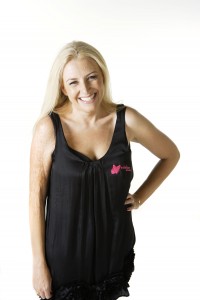 Danni Miller Today's guest post is written by Dannielle Miller. Dannielle is a highly respected and experienced educator, author and media commentator on issues affecting teenage girls. She is CEO of Enlighten Education, an organisation that works with thousands of teenage girls across Australia and New Zealand each year. Dannielle writes a thought-provoking weekly blog, and hosts a Facebook page, where an active community of students, parents and teachers and provide an important forum for discussing issues relating to girls and education. Dannielle is also the author of The Butterfly Effect, a book on raising happy, confident teenage girls by forging deeply connected and loving mother-daughter relationships. I lament the use of terms such as “liberation” and “empowerment” to sell women more and more product. In this post I want to particularly question the use of terms implying female empowerment in the growing trend to convince women to change what is surely something quintessentially female — our vaginas. Case in point? The latest series of advertisements for Schick Quattro’s TrimStyle all-in-one razor and bikini trimmer. The ads invite you to “celebrate your inner confidence” and, using the language of liberation, “free your skin”. According to the company’s PR blurb, five everyday Australian women were photographed and filmed for the campaign wearing nothing but lingerie, in and around some very public locations in Sydney’s CBD. Men are shown gawking at them, whilst other women look on admiringly. The women do have inspiring stories — there is a single mother and a cancer survivor — yet surely as the advertisement is for a bikini razor and they are seen posed in lingerie, we can only assume that their confidence actually comes from having well-groomed vaginas. Speaking of well-groomed vaginas reminds me of one of the most flabbergasting moments in talk-show history. In January last year Jennifer Love Hewitt famously discussed on American TV that she had devoted an entire chapter of her new book on relationships to decorating her hairless vagina with jewelled decals — a practice known as “vajazzling” that is gaining in popularity here, too. Hewitt told her host “Women should vajazzle their vajayjays . . . It really helped me.” She went on to say, “After a breakup, a friend of mine Swarovski-crystalled my precious lady . . . and it shined like a disco ball.” It really “empowered” her, she insisted (although apparently she was not quite empowered enough to use adult terms for her anatomy). Forget the war on terrorism — if the amount of ads for decorating, shaving, waxing and electrolysis are anything to go by, it is the age of the war on women’s vaginas. Actually, it is not just grown women who are being told they should doubt their own genitals. During the formal season last year, beauticians noted a huge increase in the number of young women wanting “intimate” grooming treatments. Girls as young as 14 were asking for Brazilian waxes. Enlighten Education’s Program Manager for New Zealand, Rachel Hansen, who is also a women’s health and sexuality educator, tells me of a school in NZ for Year 1 to 13 students that ran a beauty salon’s ad for Brazilian waxing in the school diary. Imagine pulling out your five-year-old daughter’s homework diary and an ad for Brazilian waxing jumping out at you. It seems teens no longer even know what “normal” is. In episode one of the UK’s 2009 Sex Education Show, when teens of both sexes were shown images of women with pubic hair, they gasped in what seemed to be shock or disgust. The producers had set out to show that in reality “we all come in all different shapes and sizes. From penises to pubes, bums to boobs whatever you’ve got it’s all perfectly normal.” Cosmetic surgeons would have us believe otherwise. As if waxing, plucking, electrolysis and decorating is not enough, far more serious procedures are being widely promoted by surgeons as important for restoring women’s “confidence”. Researcher Karen Roberts McNamara argues that women are going under the scalpel to have their vaginal openings tightened and their labias made smaller because they have been convinced this will “normalise” them and thus give them confidence: The sanitized ideal of the clean, delicate, discreet vaginal slit, so widely used in the plastic surgery industry discourse, functions in such a way as to cast the bodies who have not undergone these procedures as necessarily dirty and unsightly . . . Scholars have noted that in years past, women rarely had the opportunity to see other women’s vaginas and thus had no sense of how a typical vagina might look. Yet with the mainstreaming of the adult entertainment industry, the situation has changed dramatically. Now, a beauty standard has emerged, one established primarily through porn actresses, nude models and strippers . . . The irony of this situation is that in pornographic films and photographs, everything from eye colour or stretch marks, to genitalia, can be modified digitally. Amanda Hess, in her excellent piece “The Problem With Defending The Sacred Choice To Vajazzle”, concludes with a call-to-arms of sorts that I am taking up, and that I urge all girls and women to take up. For now, the more extreme performances of femininity, like breast implantation, vaginal ‘rejuvenation,’ and Vajazzling aren’t considered the norm for women. I’m not going to be met with shock when I remove my pants and reveal to my sex partner that I haven’t converted my pubic mound into a shiny disco ball. But these days, it wouldn’t be out of the ordinary for him to be shocked that I’m not perfectly waxed. The body hair ship may have sailed, but vaginal modification is at a point right now where we are still in a position to fend off the tide. And my greatest fear is that someday, we will wake to find that our girls are being routinely Vajazzled upon puberty, and realize that we never stood up to say, ‘This…is . . . ridiculous.’  I am saddened by the way menstruation is usually referred to in negative ways. Girls usually laugh uncomfotably when I suggest to them that actually their menstrual period is AMAZING and a cause for celebration. And, encouragingly, more often than not they are open to learning to see it in a positive way. In my workshops with adults, women are often keen to share their experiences of their period. I am really interested in DeAnna L'Am's idea of menstruation being a 'chain of pain' that is passed from generation to generation. Today's post is written by DeAnna L’am. DeAnna is a speaker, coach, trainer and author of 'Becoming Peers – Mentoring Girls Into Womanhood'. Her pioneering work has been transforming women’s & girls' lives around the world, for over 20 years. DeAnna specializes in enriching women's lives at any age, helps mothers develop ease & confidence about their girl's puberty, and trains women to hold RED TENTS in their communities. Do you truly believe nature intended women to suffer monthly? This is a rather absurd idea, when you think of it this way, since menstruation is an essential component of women's ability to birth life. Without it, women will not be able to conceive. So how did this happen? How did a natural process become such a problem? Let's look at how menstruation is held by the culture at large. In western cultures women seem to be doomed when they do, and doomed when they don't (bleed, that is). Women are considered to be out of control when they are “on the rag,” and out of control when they are in menopause. Imagine how out of control one might get when their body is tired, their mind fatigued, their emotions exhausted... when every ounce of their being wants to go to sleep, yet they are not allowed to do so.... not only are they denied sleep, they are expected to go to work, be productive, cordial, efficient, and social.... wouldn't you go berserk? Well, women often do, if we buy into the cultural expectation of having “every day of the month be the same”, and push ourselves to prevent menstruation from interfering with our work and life. On top of this, we are also fed a diet of negativity about our menstrual cycle, from a very young age. A cultural taboo, often not mentioned by name, menstruation is referred to as a “necessary evil,” a nuisance, or “the curse”. Now imagine again how you would feel if you were so tired that all you could think of is sleep, yet you were told that your state is “a curse” and you must get over it and get on with your work. Or if you were offered medication to overcome your tiredness, and expected to perform at top notch? Wouldn't you snap? Indeed, this is what happens to many women all over the world, in response to years of internalized negativity about menstruation. This is coupled with the unacknowledged, ignored (and often unconscious) deep yearning to go inward, rest, replenish, and renew, during menstruation. Add cultural hostility to our denied monthly need to regenerate, and what do you get? Out-of-control-raving-mad-lunatic-raging-bitch! And rightly so! Since this is the ONLY way we can express the tension inside us. Or, perhaps, the only culturally acceptable way - to which society reacts by perpetuating the belief in menstrual “badness.” Not being taught to honour our monthly need for regenerating our emotions, and renewing our spirit (while our body renews itself) we not only loath our menstruation, but start developing symptoms, which will make us slow down, stay in bed, rest... This whole chain reaction could have been prevented in the first place, had we slowed down and took time out, monthly, without our body having to scream at us via painful symptoms. This “chain of pain” is passed on collectively by our culture, and individually -- from mother to daughter. Your grandmother was probably handed negative messages from your great-grandmother, your mother from your grandmother, you from your mother, and now, is your daughter receiving this painful legacy from you? How about your granddaughter, stepdaughter, niece, or your best friend's daughter? Do these girls hear you talk about menstruation as something you dread, hate, or can do without? Do they experience the wrath of your mood swings, irritability, or depression when you are menstruating, because you don't take time for yourself? What message do you think this conveys to them? And if you could convey another message, wouldn't you? Yes, you may say, but I can't convey another message since I'm suffering from PMS symptoms... Here is where I'd like to rock your boat a little (or a lot) by saying: PMS is Not a Requirement! PMS is your (wise!) body's strategy for getting your attention! It is your body's way of telling you that you need to slow down, go inward, release any toxins from the month you've lived, and regenerate yourself for the month ahead. Taking medication for PMS is like taking pills to suppress yawning when you are tired, while all you need to do is go to sleep. When you start questioning the beliefs you internalized about menstruation, when you start caring for your body and allowing it to naturally renew (rather than suppressing its need to rest) you are going to be able to gradually reclaim your cycle as a source of renewal in your life. Not only would you reverse your symptoms, but you could stop the legacy, which our culture has been blindly passing down from one generation to another. Furthermore, you'd be able to model an empowered womanhood to the next generation, starting with your own daughter. She and her peers will, in turn, be able to pass it on to those yet to be born. PMS can stop with you! And together, we can change the world... Thanks to DeAnna L’am for this thought-provoking post. There was widespread discussion about the ''I like..." Facebook craze last month. While I felt that this campaign sexualised breast cancer in a weird kinda way, NZ Girl's latest campaign has left me (nearly) speechless. Viewers are invited to "get your tits out for the girls!... and don't forget to check out the other lovely pairs, beautiful boobs and pretty titties already uploaded."
For every 50 pairs of "titties" uploaded by viewers, NZGirl will donate $1000 to breast cancer awareness. This campaign began yesterday and already there is a gallery of over 49 pairs of breasts to peruse, rank and comment on. Hmm, a gallery of "titties" ranked according to popularity and the ability for me to leave comments about them. How exactly is this different to a crude pornography site? NZGirl is exploiting women and girls in order to drive traffic to their website. It is making light of an horrific disease in order to gain popularity. It is belittling the experience of breast cancer sufferers, many of whom are left scarred or who have had to have their breasts removed. But in marketing terms, this campaign has been a resounding success - over 25,000 people visited the site this morning, crashing it. Boganette has written a great post on why NZGirl's campaign is oh-so-wrong: "Celebrate breasts, of course. But don't do it in the name of breast cancer. Breast cancer isn't about breasts. It's not something you should have a laugh about on Twitter. It's not something you should joke about on Facebook. It shouldn't be a reason for posting photos of your breasts or flashing them or 'getting them out'... Breast cancer is a horrible, miserable, horrifying disease - that's it. It's cancer - it's not motivation for you to be happy with your body." I hate the pretty-fying of breast cancer. The sexy-fying of breast cancer. Breast cancer is not sexy images of pert wee breasts. If you want to see the realities of breast cancer, check out The Scar Project. It's raw and it's real. There is nothing funny about it. According to Stuff: NZgirl editor and general manager Tee Twyford said the campaign wasn't about driving traffic to their site, but about raising awareness. "The reason for it was twofold. There was a desire to have readers feel really good about their breasts and we wanted to align it with a breast cancer cause to get greater awareness and funding," Twyford said. So, according to Tee Twyford, women need to share photos of their breasts with the world in order to feel good about themselves. We all need to seek external validation to make sure that our breasts are up to scratch, that they're OK. Dear Tee, please explain how being in the lower half of the rankings is going to help 50% of those women feel good about their breasts? Because Tee, in a rankings system, there is always a loser. And for the 'winners' in the top half of the rankings, are they supposed to feel great about themselves because a whole bunch of strangers have critiqued their breasts and given them a thumbs-up? Tee Twyford, I am not going to send your website a photo of my breasts. They are beautiful and I love them. But I don't need NZGirl to rank them and I don't need strangers to give me their comments about them. Because those strangers don't know that my breasts and I have been through lots together. Those strangers don't know or care that my breasts fed my baby and that I love them in all their uneven, stretch-marky, increasingly-less-pert glory. Or that it took me quite some time to learn to love them. Disturbingly, but not surprisingly, many of the breast photos that have been uploaded seem to be of teenagers. Through Enlighten Education I work with teen girls throughout New Zealand. I often have tears of sadness when talking with them about the immense pressures they face with regards to their body. New Zealand's rates of eating disorders and depression amongst teenagers are skyrocketing. Just yesterday I spent a morning with 150 gorgeous year 10 girls who all told me that they felt that they were not beautiful enough, not skinny enough and not perfect enough. It is campaigns such this one that add to the overwhelming pressure and sense for girls that they are just not enough. As soon as I have posted this I am going to email Tee Twyford to invite her to sit in on one of these sessions. Perhaps then she would realise the effects that such media campaigns have on our girls. Once photos are uploaded on to the internet, the owners cease to have any control over how they are used. To assume that these photos will not be used for pornographic purposes is naive. We teach girls to never upload compromising photos of themselves - why is a (previously) respected website encouraging them to do exactly this? Women, why are we doing this to each other? Are men rushing to upload photos of their penis to raise money for "cancer awareness"? NZGirl, if your motivation really is to raise money for breast cancer research I can think of a million more positive ways to do this. Even simpler: if you really want to donate to a good cause, just get out your credit card and donate. Simple. This video gives such a powerful message in such a simple way.  This article featured as a guest post on Enlighten Education's blog a few weeks ago. The article deconstructs the media’s portrayal of violence committed by girls and asks us to focus on the real issue: that girls and young women urgently need our support. Periodically the media will seize upon an isolated incident or two and make sweeping generalised statements. In recent months, we have seen a lot of the tried and tested “girls gone bad” story, focusing on girls’ violence and bullying via internet and text messaging. No one will deny that the “girls gone bad” headline is a great attention-grabber. Girls engaging in violence challenge society’s fundamental beliefs about females as nurturers, protectors and as victims of violence. Yet in emphasising cases of girls’ violence more than boys’ violence, the media perpetuates the notion of the “bad girl” epidemic. This in turn legitimises violence as an option — “Other girls are doing it, why can’t I?” Social anthropologist Dr Donna Swift believes that: "the media . . . is creating the image of a new feminine epidemic of mean girls. Similarly, kickass girls, as I call them, are being promoted by the entertainment industry as the new role model for girls. This is a role model that promotes sexualised aggressive behaviour and rarely is our society countering this by teaching girls that assertive behaviour is an alternative option. Sadly, many young males find girl fighting titillating and some girls turn to this behaviour as a way of attracting male attention." Professor Kerry Carrington, from Queensland University of Technology’s School of Justice, said a simple internet search yielded 73 million hits for girls’ fighting, compared with 31 million for boys. There were 24 million girl-fight videos on YouTube – eight times more than those featuring boys. I propose that girls aren’t engaging in more fights than boys but that because female fighting breaks traditional norms, society is fascinated by it and gives it much more attention than male violence. An example of this fascination is the beer advertisement from the USA in which two women with plunging necklines have a minor disagreement. They begin to wrestle and as they do so, they discard their clothes, revealing sexy bodies in skimpy lingerie. They end up writhing and moaning together in wet concrete. At the end, two men imply that such a fight scene is every man’s fantasy: “Who wouldn’t want to watch that?” Focusing on the real issues What the “girls gone bad” sensationalist headlines don’t mention are the triggers and history behind girls’ violent offending. Focusing on hyped-up incidents sells newspapers because it shocks readers. It also makes it easier to ignore the real problems young women are facing. Dr Donna Swift is leading a research project in New Zealand that looks at violent and anti-social behaviour by teenage girls. Initial findings from the project indicate that of girls engaging in violence towards others, approximately 70% were not attending school, 60% were self-harming, 50% had experienced text bullying, 50% had run away from home, 40% had witnessed domestic violence, 30% had been raped and 30% had taken a drug overdose. Such findings are backed up by numerous international studies. At what age does society stop blaming the situation or the parent, and start demonising the child? As other commentators have noted, we need to remember that the violent girls we demonise in the media today are the abused and neglected children we read about with such compassion yesterday. More often than not, the demonic “girl gone bad” is a child who is actually desperately in need of love and support. Sensationalist media stories that focus on the negative exaggerate the problem of girls’ violence in the public’s eye and in doing so create a monster out of the teenage girl. This further demonises young women and creates a disconnect between them and the community – a community full of people who could potentially act as friends, mentors and advocates for the very girls that they are demonising. Increasingly, girls are engaging in other types of violence that very rarely hit the headlines: "Many young women are growing up with the societal expectation that they can do anything and must do everything. According to females portrayed in the media, girls should be brave, independent, strong, smart, savvy, athletic, and able to kick ass as well as being beautiful and sexy, be wanting and waiting for a relationship with Mr Right, able to produce adorable children, keep a perfect house and be ready to climb the next step on her career ladder. Girls who can’t compete for this reality take out their anxieties about personal inferiority or anger of rejection on themselves." – Dr Donna Swift Tragically, for many girls, acts of violence towards themselves, such as cutting and bulimia, are an everyday reality. Focusing on the positive We need to look beneath sweeping media generalisations about girls and violence. We need to celebrate the fact that the vast majority of our girls will never choose to engage in violent acts. We need to understand that the girls who do usually have long histories of victimisation and need the full support of the community. We need to focus on giving our girls the tools and the confidence to face up to the challenges of teenage life today. We need our communities to be overflowing with support for our girls. Only then will we be able to start turning the tide against self-harm, depression, bullying and violence. 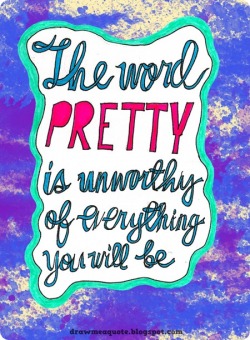 This is an extraordinarily powerful poetry performance by Katie Makkai defining the word "pretty", and the pressures faced by girls and women to define themselves by a narrow definition of "pretty". I love that it is calling for change and that it is raising awareness of the messages that mothers (and women in general) are passing on to their daughters. And the call to action at the end, a vow to her own 'someday- daughter' gave me goosebumps and tears. I invite you to watch the video below.  Dressed in a slinky red evening gown with long blonde hair, lengthy dark eye-lashes, sultry eyes and immaculate make up, Sasha Bennington looks every bit the glamour model ready to strut down the catwalk or pose for a fashion magazine cover. But Sasha is eleven; strip away the makeup and the sexy clothes, she is a little girl lost. Following on from Tuesday's 'Baby Beauty Queens' on 60 Minutes, last night 20/20 featured young Sasha and her family (from Manchester, UK). They were interviewed about Sasha’s “career” and their aspirations for her. It was a disturbing episode. With hundreds of dollars spent on her beauty regime every month, Sasha’s mother dreams of her daughter's future celebrity status – “I want Sasha to get every opportunity she can”. She seems to pay her daughter the ultimate compliment as she describes her looking “like one of those little Cindy dolls you play with”. After Sasha's mother described her daughter as confident and talented, when asked to describe herself, Sasha says “Three words to describe myself? – pretty, blonde, dumb... I am stupid”, followed by inane laughing of mother and daughter. Sasha later points out that “I don’t need a brain”. I acknowledge that such “current events” TV shows do often highlight the freaks and absurdities in our society, and I predict that the overwhelming majority of people who viewed this in NZ last night would share my views. Examples such as Sasha Bennington are the extreme: However, for many girls and young women growing up today, there is a similar pressure to achieve the looks and body of the models that surround us in magazines, TVs and billboards. It seems in many circles, the backlash against beauty contests, begun by the feminists in the 70s has well and truly turned full-circle. With our society obsessed with reality TV shows, offering the average punter their chance of “fame” and “making it”, is it any wonder that we are now seeing a resurgence in the popularity of beauty contests? For parents, they are the ideal training ground for such shows as Next Top Model, Idol etc. Sasha's take on it: “Like, 20 years ago, people cared about careers and stuff, but now it’s what you look like”. Such child beauty contests have not made it to NZ (that I am aware of), but a part of me thinks it is only a matter of time. I hope I am wrong. In the words of Kahlil Gibran, “beauty is not in the face; beauty is a light in the heart”. Child beauty pageants and all that surround them kill that light in the heart. 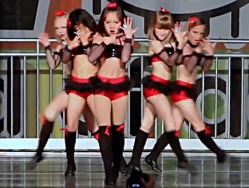 Last week a group of 9 & 10 year old girls gyrating their way through a sexy dance performance horrified many, me included. The girls are obviously talented dancers, but the sexy skimpy black lacy outfits combined with the provacative dance moves amount to a degrading and totally inappropriate performance. Facing widespread criticism, the girls parents have defended their daughters' performance: "The costumes are designed for movement and to show bodylines..." This interview makes the whole episode that much sadder for me. The parents seem to have missed the point entirely. As Danielle Miller, in the clip below points out, these girls are actually more scantily clad than Beyonce was in the original music video. I think one issue that this interview with the parents raises is how public our lives have become. Whereever your children are, whatever they are doing, there is a chance that their activities are being videoed and that this video could end up on the world wide web. If these girls had performed this dance a few years ago, it's highly unlikely anyone except the attendees would ever have seen it. However, it's 2010 and someone videoed the performance, put on YouTube and it went viral - it's now been viewed over 2 million times. The saturation of technology in our lives and the ease at which information can be spread across the world means that as parents we have to be ever more vigilant about protecting our children against exploitation. 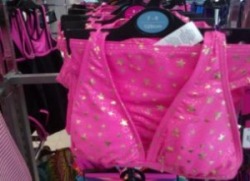 I love playing dress-ups; putting on a costume and becoming someone else for a while. As a girl, I remember finding great delight stomping round the house in Mum’s high-heels, her flowery skirts billowing up under my arms and beads trailing on the floor. Sometimes we’d pull on her old swimsuits and sarongs and pretend to be ladies at the beach. We were playing: we knew that those clothes weren’t little girls’ clothes. But the line between women’s fashion and girls fashion is blurred these days as the fashion industry has realised that young children are ripe targets for their marketing. The ‘girls’ fashion’ industry has boomed and has resulted in girls’ fashion simply being smaller sized versions of what teenagers and women are wearing. At face value, this doesn’t seem something we need to be concerned about. However when this means that lacy lingerie, sexy jeans and high heels are now seen in the ‘girls’ clothes section, I feel horrified. Yesterday, UK clothing chain store Primark withdrew from sale its range of padded bikini tops for girls as young as seven, following widespread criticism and outrage. The $4 bikini sets have been available in candy pink with gold stars and black with white polka dots. (Side note: Why do pre-pubescent girls need to wear bikinis anyway? In Europe I noticed most girls in similar swimming attire as boys until puberty – this made sense to me). Primark has apologised to customers for "causing offence" and said it would donate profits to a children's charity. The company refused to discuss the bikini's padding but an anonymous source “familiar with the product said the extra fabric was designed to preserve a girl's modesty and prevent any signs of a developing breast from showing through”. ‘Preserve a girl’s modesty’!!! What an oxymoron. By tying a padded bra on them? Need I say more. Even more saddening, this comment furthers the attitude that somehow girls developing bodies are somehow shameful. A number of UK politicians have condemned Primark for stocking such a bikini and several people have referred to the bikini as the “paedo-bikini.” But this phrase seems to be implicating girls for the behaviour of paedophiles, which in turn minimises the blame on the perpetrator. Girls and the clothes they wear are not to blame for paedophilia: paedophiles are to blame for paedophilia. As the American Psychological Association (2007) report on the sexualisation of girls stated, "If girls purchase - or ask their parents to purchase - products and clothes designed to make them look physically appealing and sexy, and if they style their identities after the sexy celebrities who populate their cultural landscape, they are, in effect, sexualising themselves." Mumsnet (UK) have launched a Let Girls Be Girls campaign. This campaign asks retailers to pledge not to sell products that prematurely sexualise children. They have an excellent list of reasons why we all should be worried about the sexualisation of girls clothing:
The upside to the Primark bikini debacle is that the media outrage has been universal. No one is suggesting that on any level are these bikinis acceptable. Let's take this opportunity to take a stand against the companies marketing sexualised clothing. On a personal level let's ensure that we all consciously clothe our children: they are children and they don't deserve to be sexualised. 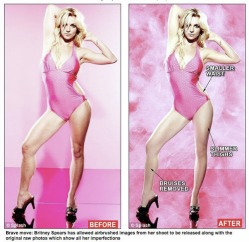 Britney Spears It’s not often (ever?!) that I am heard uttering the words “Good on you Britney”, but today, I think Britney Spears has done good. She agreed to let the UK's Daily Mail release un-airbrushed images of herself next to the digitally-altered versions. They say "the 29-year-old singer made the extraordinary move in order to highlight the pressure exerted on women to look perfect". I spent some time looking at these photos, comparing the 'before' and 'after' shots and am amazed at how extensively every blemish and "not perfect" aspect is corrected. The dry skin is covered, the bruises are banished. Even Brit's muscles have been smoothed over and 'minimised', and the *ahem* 'camel toe' dealt to. With glossy magazines and bill boards taunting women with impossible beauty it is great to actually see the full extent of how we are being deceived by the use of digital enhancement. On a conscious level, I know that most magazine and advertisements featuring scantily clad women are airbrushed. On a subconscious level, I still find myself marvelling at the petite bottoms, incredibly long legs and flawless bellies. I am long past aiming for such “flawless perfection” and have even come to love my belly that always has and always will have a slightly-pregnant pose to it. But as a teenager facing these billboards and glossy pictures, I remember having such a distorted view of my body. At 14, I went bikini shopping and spent hours in front of shop mirrors in countless numbers of size 8 bikinis grabbing every piece of “fat” (read: skin fold), only to finally conclude that I was definitely too fat to wear a bikini and went home empty handed. It makes me sad to think that I, age 14, incredibly fit and swim training up to 16 hours a week, was so sucked in by the media portrayal of ‘beauty’ to think of myself as too fat to wear a bikini. (But it also makes me smile when I throw on my a-few-sizes-bigger-than-an-8 bikini now!) My heart goes out to the girls growing up now, in a society so much more saturated by mass media and commercialism than it was in my childhood. Countless studies have shown a direct link between the media’s portrayal of beauty and body image disorders such as bulimia and anorexia. These disorders are increasing at a disturbing rate. We need to get real about the unrealistic images of “beauty” that are so prevalent in the media. So I thank you Britney for showing the world that in fact you do have dimply thighs. You don’t have a concave belly or shiny skin and you even get bruises on your legs like the rest of us. I hope more celeb’s follow suit. In fact, I hope this starts the tide of people demanding that we see REAL people in our magazines and advertisements. Getting rid of digital enhancement is an unrealistic request, but what I want to see alongside all future airbrushed images is a statement like this: “This woman’s body has been digitally enhanced. She really has dimply thighs, a cute sticky-outy belly and a small scar on her knee, but we were worried you wouldn’t buy our product if you saw those humanising features” 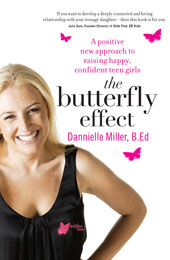 To be an effective educator, I need to be constantly learning, so an important part of ‘what I do’ is reading. People often ask me for book recommendations, and I like to be able to help out here – we are all busy people, if I can help people short-cut the path to some fabulous resources, then that makes me happy. I have recently read an wonderful book by an inspiring Australian woman, Danielle Miller. Miller’s passion is “to empower girls to grow into the bright, shiny adults they have the potential to be”. She is the founder of Enlighten Education, an organisation that offers workshops to girls in New Zealand and Australia promoting self-awareness, esteem, communication and acceptance. So much media attention is directed towards the downfall of youth today and the pressures and dangers present in the lives of our children. In moments of rage directed at soul-destroying music or childhood-ruining marketing, I have been heard to announce, “Right, that’s it. We’re running away to an isolated commune with no access to all this!”. But I don’t run away: I fight. (In the most positive non-aggressive way of fighting!). These moments of rage are why I am doing what I am doing. But I know that as a parent, it is easy to become despondent. And that’s exactly why I love Miller’s new book, 'The Butterfly Effect'. It brings me back to how we can all make a stand against the sexualised, commercialised, celebrity-focussed, fake barrage of images and noise thrust at our children. ‘The Butterfly Effect’ is a captivating book, offering a positive approach to raising girls. The challenges and pressures faced by girls and their parents are explained and backed up with research as well as Miller’s own extensive experience. But far from adopting an ‘end of the world’ approach, Miller breaks down the different aspects of raising girls, and provides realistic solutions and advice. The book emphasises the impact of women as role models – particularly with regards to body image and diet. With the prevalence of eating disorders amongst our girls increasing at a disturbing rate, this is something that all women need to consider. How can your daughters/nieces/granddaughters learn to accept their bodies when the women in their lives are constantly dieting and are so critical of their own? Miller’s approach to raising happy and empowered girls is based on forging deeper, more loving relationships – in Miller’s words: “When working with teenagers, it is important to engage them emotionally; if you can capture their hearts, their minds will follow.” I thoroughly enjoyed reading this book, a book that kept me up far too late at night because I didn’t want to put it down. If you have girls, this is a book you simply must read. As soon as we found out that I was pregnant, we told our three-year-old son Sol about my pregnancy and involved him in all the midwife appointments. He recently accompanied us to the 20-week scan. After the radiographer had done all the important measurements and observations, she got to the least important part – finding the vulva or the penis. As she was looking for that part of our baby’s body she said to me “Ouhhh, you’ll soon know if you’ll have to be buying a pink tutu!” (I am sure my husband smothered a laugh at this point. I refrained from launching into a tirade about gender stereotyping and the findings of various neurological studies on babies and gender.) As it turns out, we spotted a vulva. And I realised that, at 20 weeks gestation this wee girl had already experienced her first gender stereotyping. It isn’t that pink tutus violently offend me. It's that there was an assumption that if my baby had a vulva, then buying a pink tutu would be the most important consideration and that her vulva would automatically predispose her to an uncontrollable urge to wear pink tutus. Who knows, perhaps she will be an absolute ballet fanatic, in which case I am sure our house will be loaded with tutus of all description. Or she could be a soccer player, a hip-hop dancer, a chess-genius, a swimmer... - in which case we may have no pink tutus at all. Or maybe she’ll have stages of being all of the above, and our already cluttered house will have a collection of all sorts of outfits in all sorts of colours. All I do know is that I will do everything in my Mama-Bear power to protect my daughter from all the gender-limiting stereotypes that will attempt to smother her from birth (and before!). Suddenly I am hugely grateful on a personal level to those dedicated organisations and people who are out there campaigning on behalf of our girls - Enlighten Education, 7Wonderlicious, Pigtail Pals Ballcap Buddies, Pink Stinks and many more. I will leave you with little Riley, who articulates my feelings just so well: |
AuthorRachel is a writer and educator whose fields of interest include sexuality education, gender, feminism and youth development. Archives
November 2023
Categories
All
|

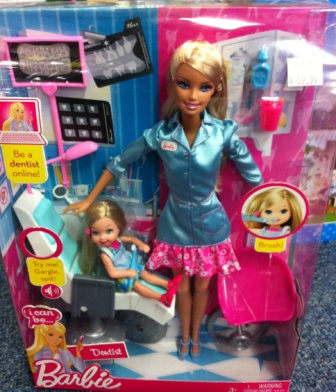
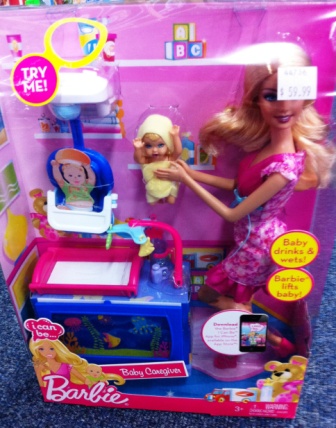
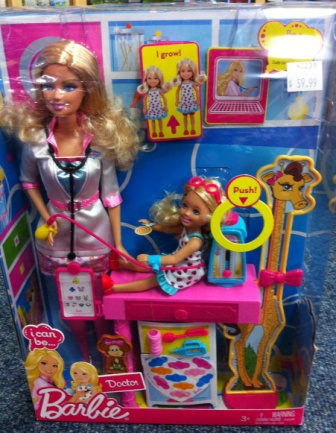
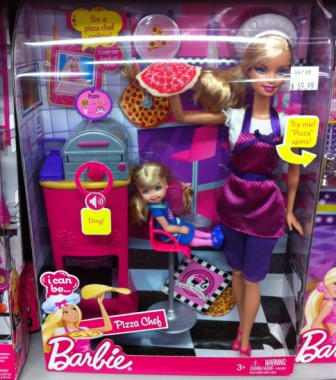
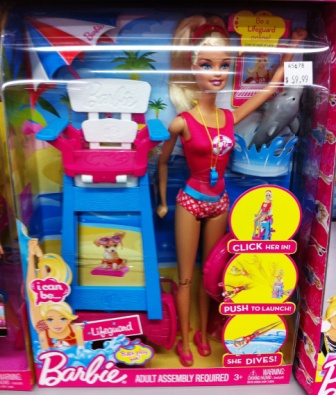
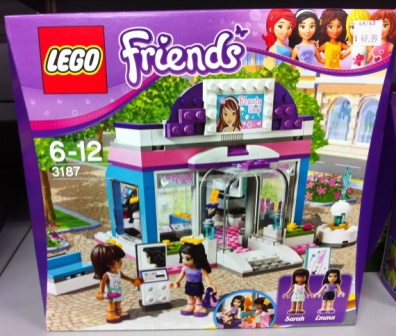
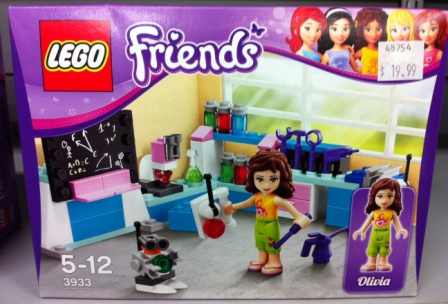
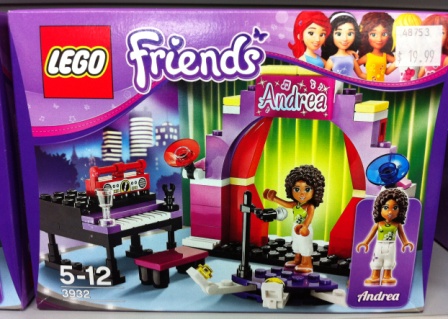
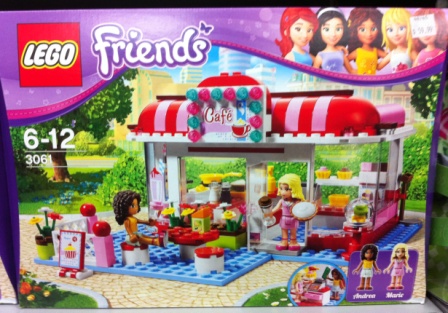
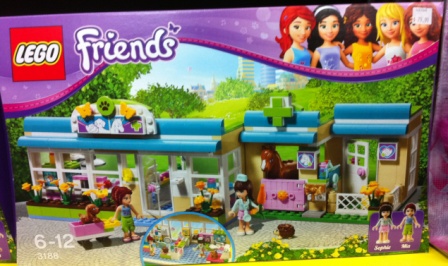
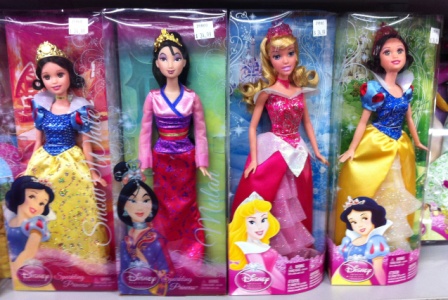
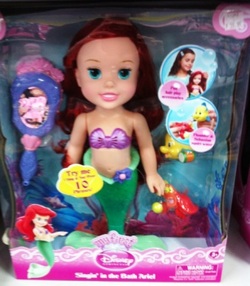
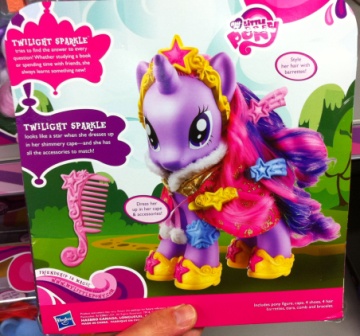
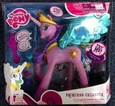

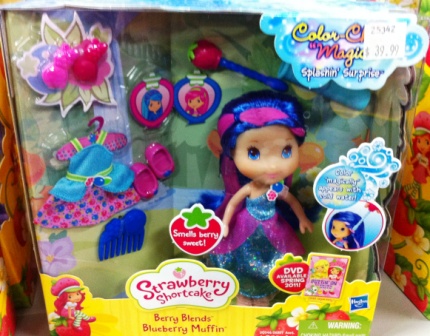
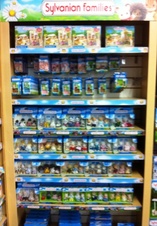
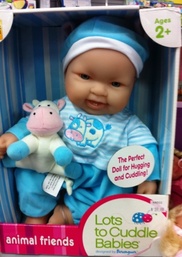
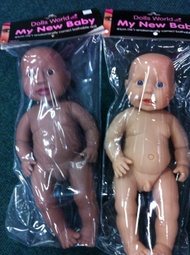
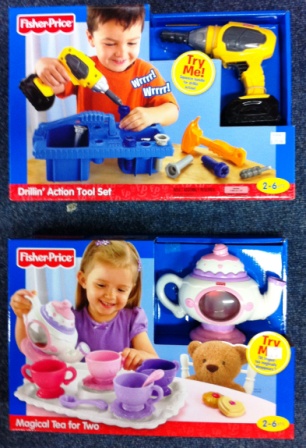
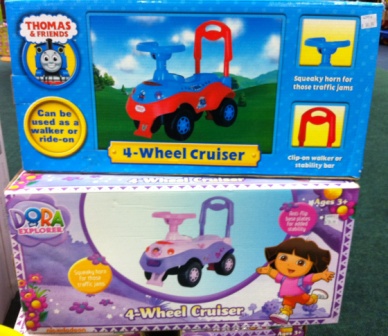

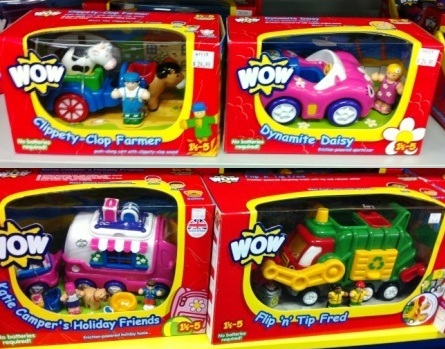
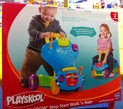
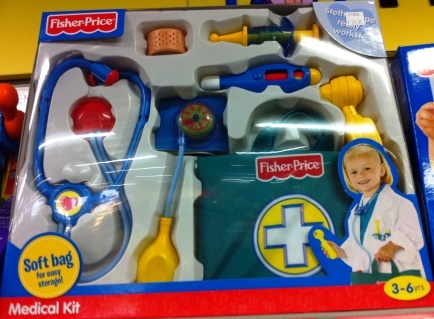
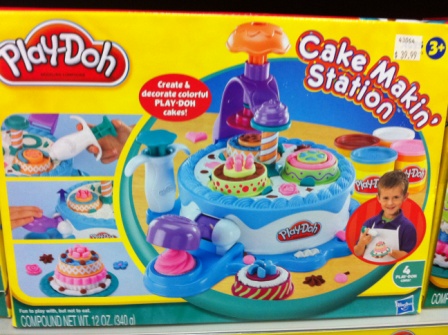

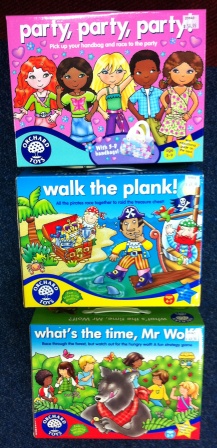

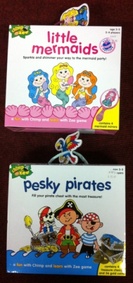
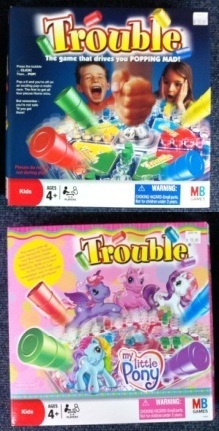
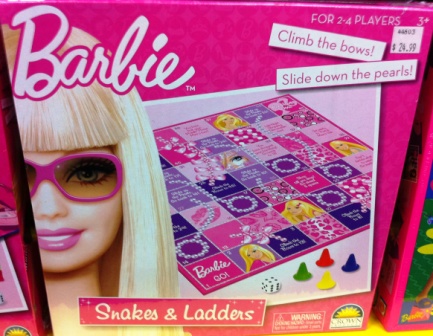

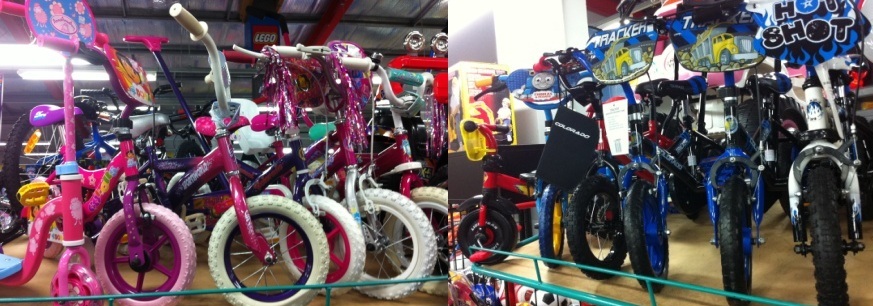
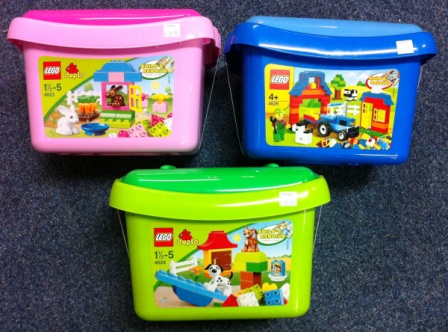
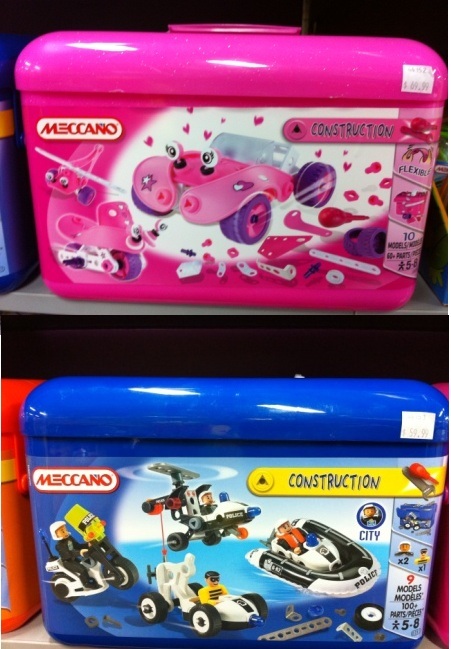


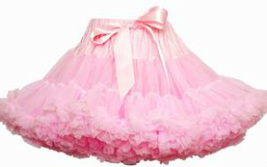
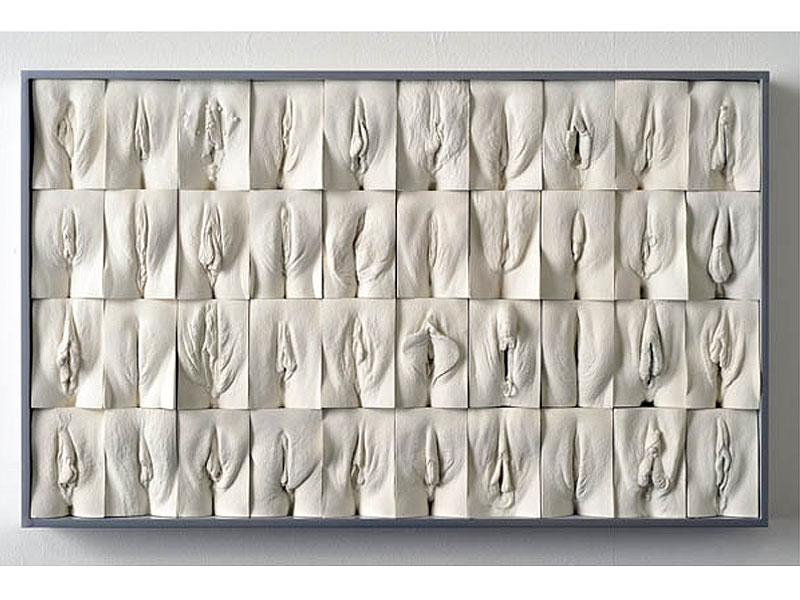
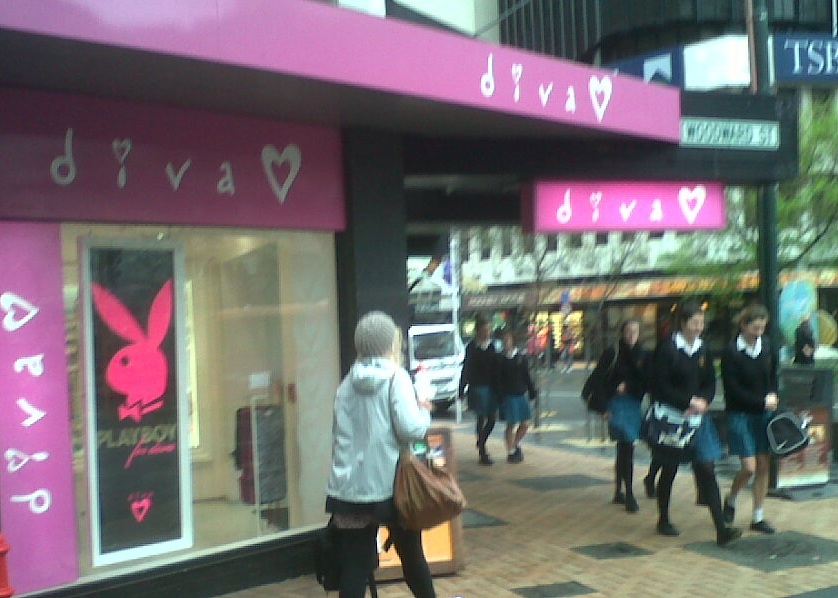
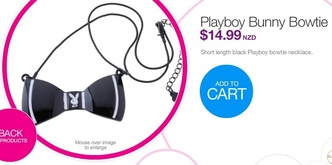
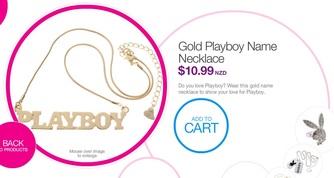
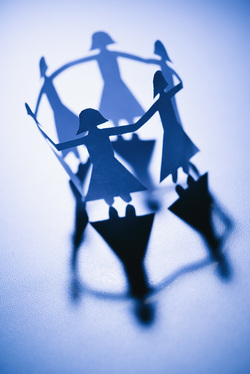
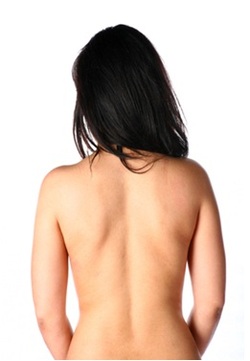


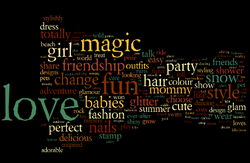
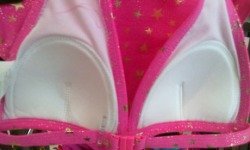
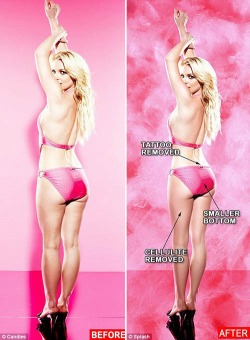
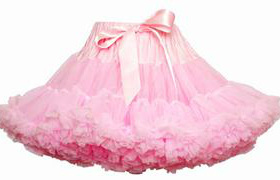
 RSS Feed
RSS Feed




